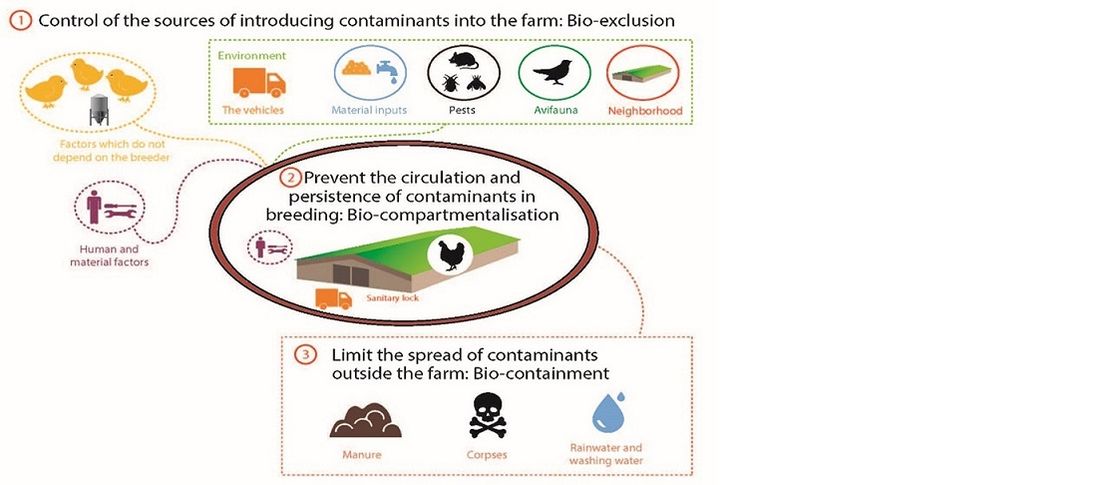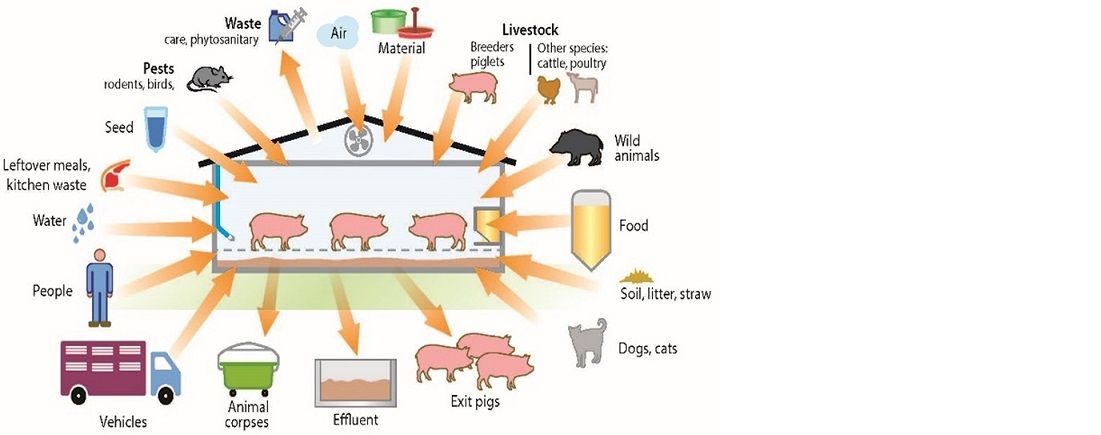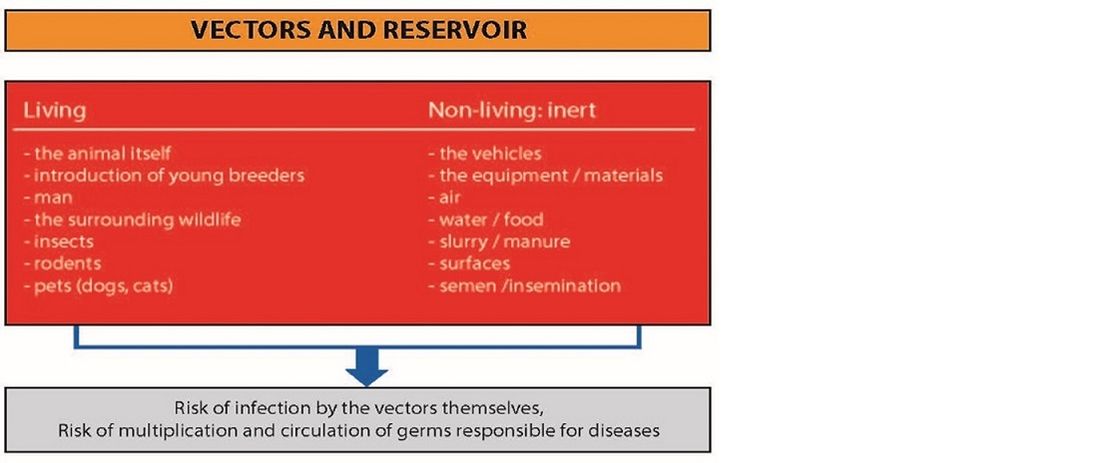This has since been updated and adopted into EU Animal Health Law (2016) as "the sum of management and physical measures designed to reduce the risk of the introduction, development and spread of diseases to, from and within an animal population, or in an establishment, premises or location (including modes of transport)."
In modern livestock production facilities, biosecurity includes all the preventative measures used to avoid contamination with biological agents. This includes measures taken to prevent the introduction of biological agents onto farms, and their subsequent spread.

Figure 1 illustrates the three types of biosecurity measures used by livestock producers.
- Bio-exclusion - this aims to prevent and/or limit the introduction of new microbial, viral, or parasitic strains onto the farm.
- Bio-compartmentalisation - this consists of measures used to reduce the spread of germs inside the farm.
- Biocontainment - the means implemented to limit the risks of transmission outside the farm and possible propogation.
Bio-exclusion encompasses the external biosecurity, including factors such as human and material factors, the environment, vehicles, inputs including feed and water supplies, and pests.
Bio-compartmentalisation covers internal biosecurity, making sure that sanitary measures are followed to keep clean areas of the farm free from potential contaminants. This might involve implementing procedures for entering a poultry or swine house for example.
Finally, biocontainment ensures that waste products including manure, corpses and drain water are managed responsibly, and the risks of transmission of biological agents outside of the farm are minimized.
Sources of contamination
There are numerous potential sources of contamination in livestock production units. It is important to identify all of them to implement suitable protective measures.
The main biosecurity risks are illustrated in Figure 2. The majority of these risk factors come from the movement of people, wildlife, domestic animals, pests, vehicles and equipment between farms and production units. At the same time, special attention must be paid to the management of waste products being transported off the site, including manure or slurry, corpses, and wastewater, which can all diffuse contaminants outside the farm.

The different routes of contamination are shown in Figure 3. Contamination can be spread by vectors and reservoirs. Vectors carry disease from one host to another in one of two ways. Mechanical vectors transfer the pathogen on its body from one host to another but do not become infected themselves. Biological vectors become infected by the pathogen before passing it on and infecting other organisms.
The reservoir of an infectious agent is where the agent usually lives and multiplies. These can be living (e.g., a human) or non-living (e.g., soil or water).

The value of biosecurity
In many parts of the world, diseases including Foot and Mouth disease, African Swine Fever and Highly Pathogenic Avian Influenza (HPAI) have caused devastating economic losses. The appearance of such emerging or re-emerging diseases has fuelled the increase in biosecurity measures being implemented throughout the world. Growing consumer concern around food safety and increasing levels of globalization in the agriculture industry will only increase the importance of biosecurity.
Inadequate biosecurity measures may result in the spread of pathogens to other breeding units, or even to other geographical territories. Once a pathogen has reached a farm, the health of the animals will deteriorate leading to increased costs for treatments, and a decrease in the zootechnical and financial performance of the farm.


